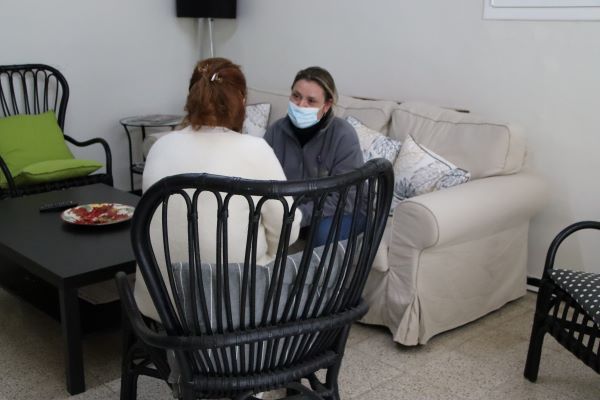Hidden homelessness of women stuck in a loop trying to survive
La Violeta, a women’s refuge in Barcelona, offers accommodation to those fighting to get their lives back after going through difficult situations

Sonia Pampin and Aylin Molejon are both staying at La Violeta, a facility that offers care and accommodation for homeless women in Barcelona.
Both tell the Catalan News Agency that they have been through tough situations, with various episodes of violence which have left them in a fragile emotional state.
In the case of Pampin, after going through a bad experience in a flat for three years, she lived in a hostel for four months before moving to a homeless shelter in Sarrià-Sant Gervasi.
From there, she was referred to La Violeta, where she says she doesn't feel "alone" and has the safety of "a house."
For Pampin, it was very difficult to get out of the "loop" she was in and return to the life she had. She’s frustrated that the jobs she was able to find were "substitute" positions that didn’t offer the "stability" that something more permanent would have.
Pampin would ultimately like to live outside Barcelona in an apartment with a cat and a job that can give her some peace of mind.
Aylin Molejon has been in the La Violeta center for two months after previously living in a hostel for 10 months.
After suffering gender-based violence for more than a decade, she had to quit her job as a caregiver because she was not in a "healthy enough" emotional state to do it.
She describes her stay in the hostel as "very hard" as she had to live alongside many different people and adapt to "daily stress."
"When I was told I could come to La Violeta and have a single room and bathroom, I couldn't believe it," she recalls, explaining how it made a huge difference to her life as it gave her a certain "privacy and silence."
She is currently looking for a job in the industrial cleaning sector but is still dealing with the effects of the violence she endured. "That situation made me feel bad, it leaves you with low self-esteem, anxiety, memory and stress problems," she says.
Molejon also says that she still finds it difficult to interact with society and that until recently she did not go out. However, the recovery process is still "strong," and she noticed an improvement after entering the women's facility. "I'm taking care of myself, the center allows me to think about how to repair these broken parts," she says.
Survival strategies
Elena Sala, head of the Women with a Home program at the ASSÍS homeless shelter, says the women staying at La Violeta are "fighters and survivors." Almost half of them work but don’t earn enough to support minimum living conditions, such as housing or transport.
Sala explains they are forced to use “female survival strategies" to keep going, which often puts them "in very vulnerable positions," ranging from depression, violence, or exploitation.
La Violeta is an inclusive residential center that joined forces with La Llavor last year, another facility designed exclusively for homeless women. "Until now, the need for facilities specific to women’s homelessness had not come up because homeless women are invisible," says Elena Sala.
She adds that most of the homelessness experienced by women does not take place on the street, but rather indoors. The so-called 'hidden homelessness' includes a wide variety of situations people can find themselves in, such as rented rooms that can be paid for by the day, women who exchange services in exchange for shelter, or women who live in the homes of friends and family.
Sometimes other forms of public space other than the street are even used, such as hospital receptions or train stations. This explains why between 90% and 95% of people who sleep on the street are men.